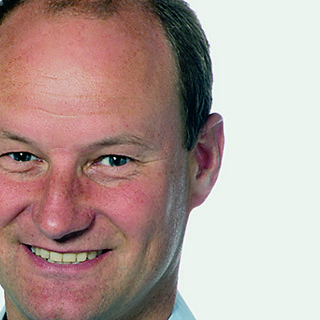How a standard for terrestrial HD TV was agreed in time for Digital Switchover
Project from 2006 - 2011

What we are doing
Almost ten years since the original DVB-T standard was published, the Europe- wide Digital Video Broadcasting project (DVB) started work on a second generation standard for digital terrestrial transmission that would improve capacity and performance.
It was also an opportunity to develop a standard for transmitting HD TV terrestrially. Although HD could already be received using satellite or cable, the majority of TV in the UK is still watched on traditional terrestrial sets that work through an aerial on the roof.
Why it matters
Following Ofcom's announcement in 2006 that spectrum released by Digital Switchover would not be available for broadcasters, it became essential to find a way to squeeze more information through the existing spectrum in order to make room for HD.
So we proposed to the European an enhanced second generation digital terrestrial broadcasting system: DVB-T2.
Outcomes
The specification was approved by DVB in 2008, and published by ETSI as a standard in 2009. The underlying technology in our modulators and demodulators has since been licensed to a number of different partners and used in commercial products.
Within a very short space of time after the launch of Freeview HD, millions of television receivers, PVRs and set-top boxes have been sold in the UK which support this new DVB-T2 standard to display programmes in HD.
The system has also been adopted in many other countries around the world, turning DVB-T2 into a truly global standard.
In 2011, DVB agreed a revision of the DVB-T2 standard to include a new profile called T2-Lite, which will allow simpler receiver implementations for low capacity applications such as mobile receivers. For further information about this, see .
How it works
The nature of DVB meant that over 70 members from 50 organisations needed to agree on a standard, and we chaired and led a wide-ranging collaborative effort to produce the specification.
We also developed our own prototype modulators and demodulators, demonstrating how they work at the International Broadcasting Convention (IBC) in 2008, and took part in an industry pilot led by Ofcom to validate the technology in a realistic environment and prepare for the launch of the services in time for Digital Switchover.
The progress of this project was driven by the desire to push a brand new broadcasting system so that Freeview HD could launch at the same time as Digital Switchover in the UK.
More than 30,000 hours, countless meetings, conference calls and emails later. the new standard was finalised and agreed between all the DVB members.
It normally takes about five years to propose, specify and ratify a new television standard, and then it has to be implemented and tested by the manufacturers, but this huge undertaking was achieved in just three years.
Project Team
Project Partners
-
an industry-led consortium of over 200 broadcasters, manufacturers, network operators, software developers, regulatory bodies and others in over 35 countries committed to designing open technical standards for the global delivery of digital television and data services


